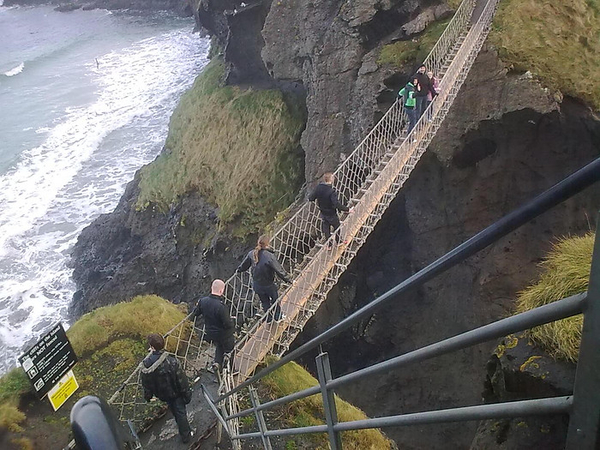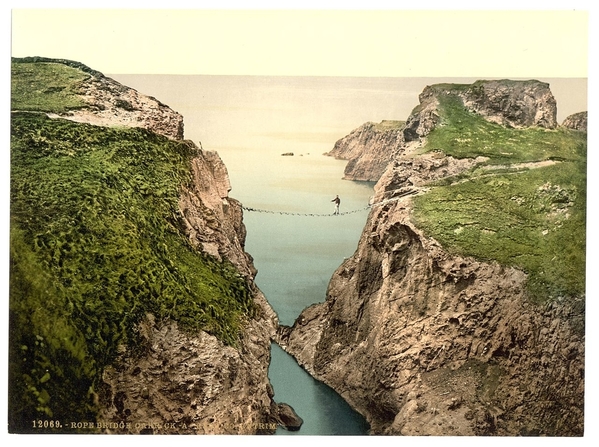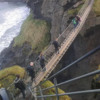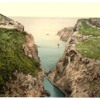If you've ever seen pictures of people clinging to a swaying rope bridge, looking as if they are afraid of either losing their lives or their lunch, you already know how I felt about the prospect of crossing the famed rope bridge at Carrick-a-Rede, in Northern Ireland.
But there we were, and it seemed wrong to punk out on an adventure, to feel old, to feel chicken. Even if true. So, I joined the long lines of people headed to the bridge, which, it turns out, is a loooong walk from the little cafe where the buses park.
In the end, though, life gave me a pass. I got an enjoyable walk through beautiful coastal country and then, as I approached the bridge, which can only take eight people at a time on its 20-metre length, I realized that there was a traffic jam of such monumental proportions that if I didn't turn back, I would miss the bus back to Dublin.
The jam also provided our One-Clue Mystery picture this week, quickly, and amazingly, recognized by George G.
I'm sure I could have actually crossed it. My cold feet don't usually keep me from looking down from shaky places; they just make me feel a bit shaky.
But when you think of the history of the bridge, that pales in comparison. The earliest version of the bridge dates back to the 17th century, when salmon fisherman began slinging rope bridges, clambering down the rocks on the other side, and boarding small boats to go out and catch salmon on their way to spawn. And they did it with armloads of fishing gear!
No one could give me an explanation of why they didn't simply start from the beach and skip the 20-meter bridge. At any rate, the original bridges were a far riskier proposition than the modern ones, built in the 20th century.
The current bridge was built in 2008, but it's strictly a tourism proposition. Where 300 salmon a day were taken in the 1960s, only 300 were caught in the entire 2002 season. The spawning grounds in the nearby Bush and Bann rivers are no longer active.





Comments (1)